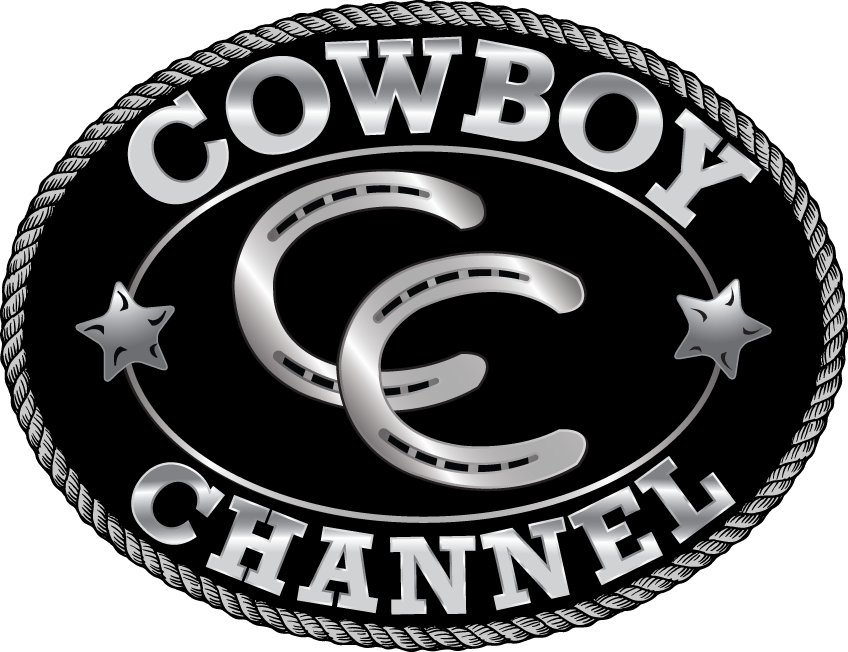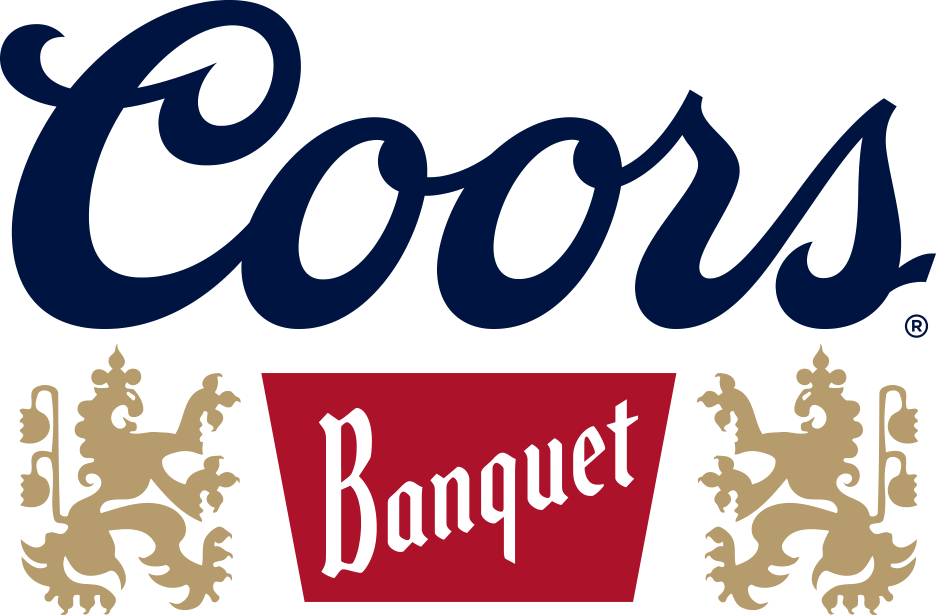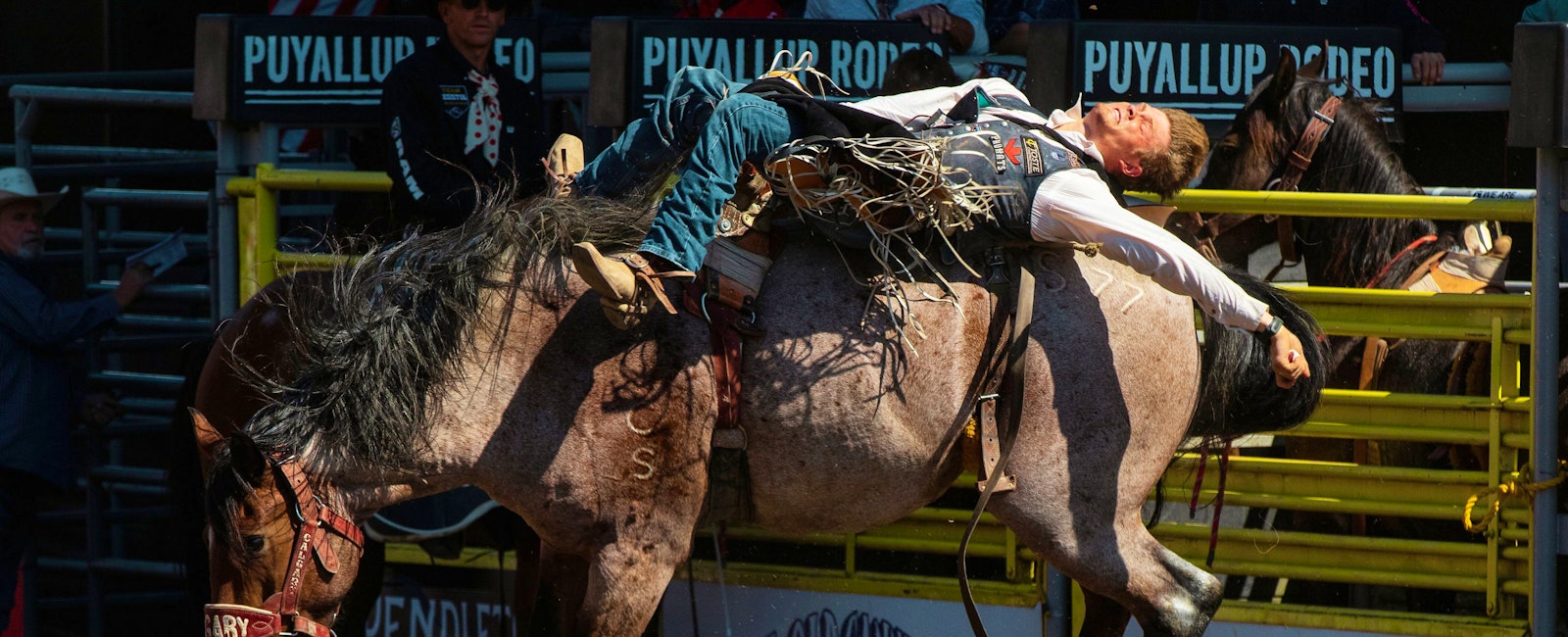
Puyallup Rodeo Events
Get ready for heart-pounding excitement at the Puyallup Rodeo, one of the most sought-after stops on the PRCA Playoff Series! At each of the five electrifying performances, top rodeo athletes compete in eight thrilling events that showcase speed, strength and grit. Every event has its own rules that determine scoring - and only the best advance.
As part of the Playoff Series, the top 24 contestants from across the country will battle it out in Puyallup. The stakes? A chance to be one of the top four advancing to the Governor’s Cup in Sioux Falls, South Dakota - one of the sport’s biggest honors.
How does the Playoff Series work? The Top 24 contestants from the PRCA compete at the Cinch Playoff Series Puyallup Rodeo, with the Top 4 from Puyallup and the Top 8 out of the standings in the series advancing to the Governor’s Cup in Sioux Falls South Dakota (12 advance). In each event, athletes are split into two “Playoff” groups with the Top 4 on two from each Playoff advancing to the Semifinals (8 compete on Sunday). From there, it’s a clean slate with the Top 4 going to a winner-take-all final.
Whether you’re a longtime rodeo fan or new to the action, this is where legends are made. Don't miss it!
From high-adrenaline rides to split-second timed events, each rodeo event brings a unique challenge. Rough stock tests grit and balance, while timed events showcase speed and precision. Here’s a quick look at the eight events that make rodeo one of the most exciting sports around.
Rodeo Events
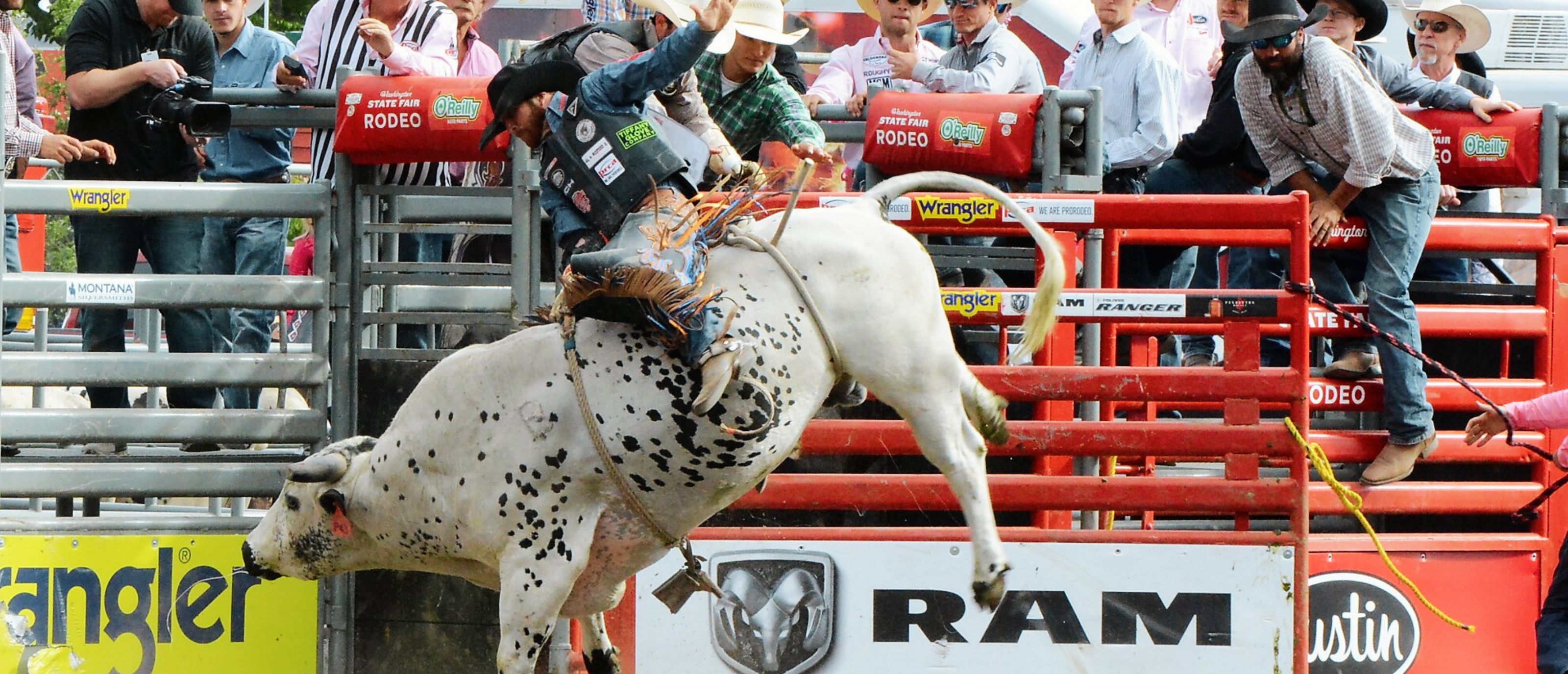
Bull riding is one of the more exciting - and dangerous - rodeo events. A rider sits atop a 2,000-pound bull holding on only via a rope.
The rope is wrapped around the bull's chest, just behind the front legs. One end of the rope, called the tail, is threaded through a loop on the other end and tightened around the bull. The rider then wraps the tail around his hand, sometimes weaving it through his fingers to further secure his grip. A bell attached to the rope excites the bull, causing it to buck harder, and acts as a weight that pulls the rope off the bull once the rider has released his grip.
Bull riding requires exceptional balance, upper body strength, flexibility and quick reflexes. Riders are not required to spur the bull, but it usually results in higher scores.
When the rider nods his head, the chute opens and the bull and rider explode into the arena, twisting and turning. The rider's goal is to stay atop the bull for eight seconds.
Disqualifications:
- Failing to stay on the bull until the eight-second whistle
- Touching the bull or his equipment with his free hand
Bareback riding is often considered the most physically demanding event in pro rodeo.
In this event, a cowboy must stay atop a bucking horse for eight seconds, holding onto nothing but a leather rigging that resembles a suitcase handle.
The rider is judged on his control and spurring technique. High scores are earned when the rider snaps his spurs to the horse's neck just before the animal's front feet strike the ground. This is called "marking out." The rider then pulls his spurs along the horse's neck or shoulders toward his rigging handle as the horse bucks into the air.
Disqualifications:
- Failing to stay on the horse until the eight-second whistle
- Missing his "mark out"
- Touching his horse, himself or his equipment with his free hand
- If the rigging comes off during the ride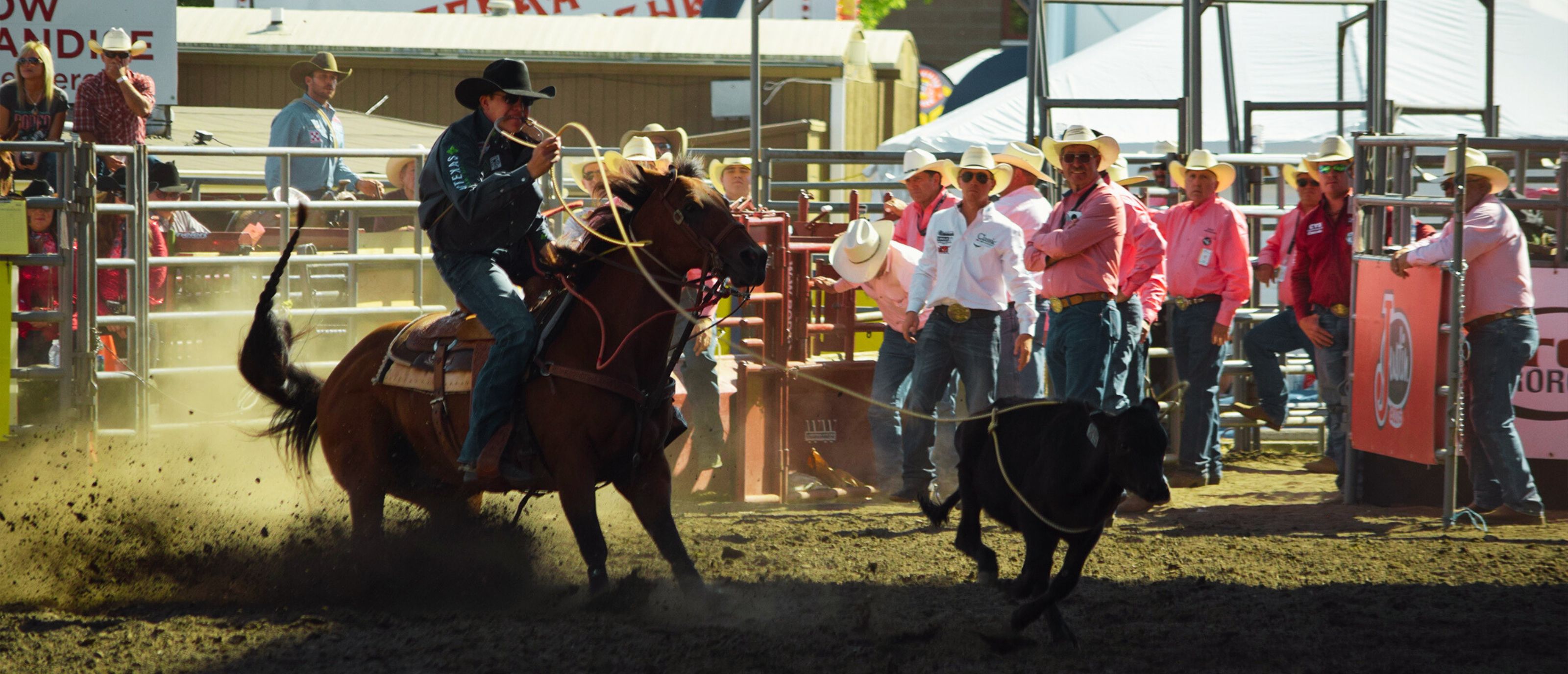
Tie-down roping requires more than quickness and accuracy with a lasso, it also requires the contestant to be an experienced horseman and a fast sprinter.
The calf is allowed a head-start out of the chute, which is determined by the size of the arena. At the advantage point, the barrier is released and the contestant takes off in pursuit of the calf.
The horse is trained to come to a stop the moment the rider throws his lasso and catches the calf. The cowboy then dismounts, runs to the calf and throws it by hand, also called "flanking." If the calf is not standing when the roper reaches it, he must allow the animal to stand before flanking.
After the calf is flanked, the roper ties any three legs together with a pigging string - a short looped rope he clenches in his teeth during the run.
While the contestant is doing all of that, his horse must pull back hard enough to eliminate any slack in the rope, but not hard enough to drag the calf.
When the roper finishes tying the calf, he throws his hand in the air to signal the judges. Then he remounts his horse and allows the rope to become slack. If the calf kicks free wthin six seconds, the roper will receive "no time."
Penalties:
- 10 seconds added to time for breaking the barrier
- "no time" for missing the calf
- $100 fine for jerking the calf over backwards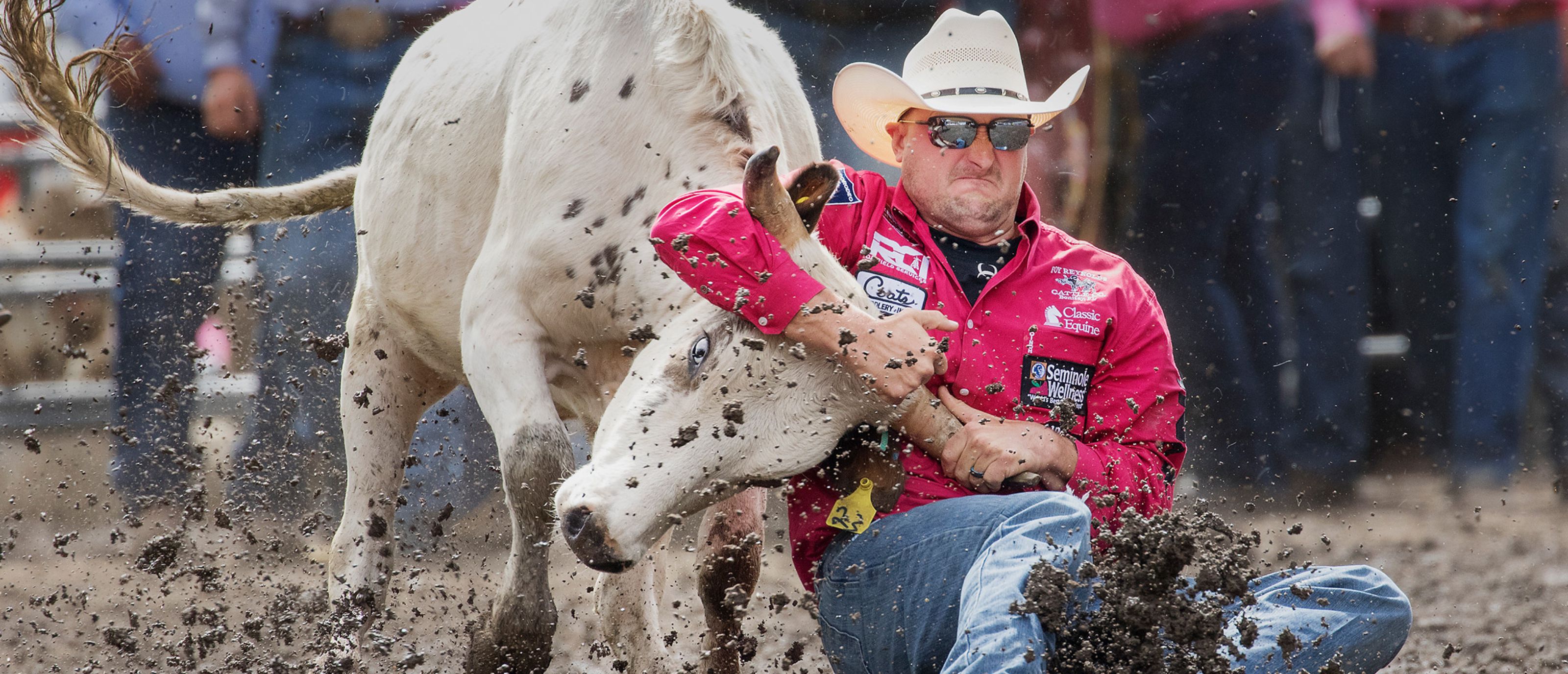
Steer wrestling is the fastest sport in rodeo. The steer wrestler, also known as the "bulldogger" uses strength and technique to wrestle a steer to the ground as quickly as possible. Since the steer often weighs twice as much as the contestant, that's no simple task.
The bulldogger relies heavily on his "hazer", another rider that keeps the steer running in a straight line. Without the hazer, the steer could quickly veer away from the contestant, ruining the run.
The bulldogger starts off on horseback in a chute. A breakaway rope barrier is attached to the steer and stretched across the open end of the chute. The steer gets a head start that is determined by the size of the arena. When the steer reaches the advantage point, the barrier is released and the bulldogger takes off after the steer.
When the rider reaches the steer, they're often both traveling at speeds of 30 MPH. The bulldoger eases down the right side of horse, reaching for the steer's horns with his hands. After securing the horns in his hands, he leaves his horse and digs into the ground with the heels of his boots to stop the steer's momentum.
After he has the steer, it must be stopped, or "tuned", before it may be thrown to the ground. A steer is not considered "down" until it is flat on it's side or back and all four feet are pointed in the same direction.
Penalities:
- 10 seconds added to time for breaking the barrier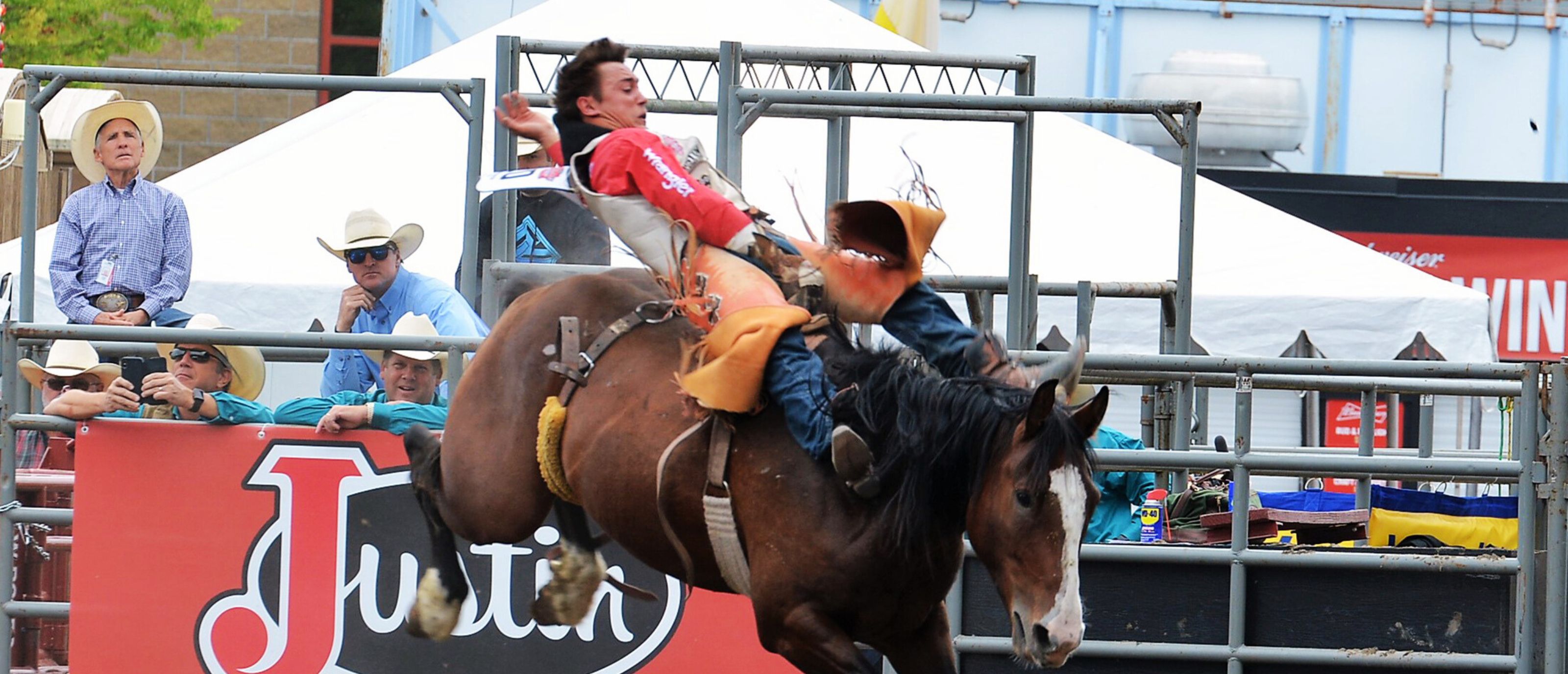
Saddle Bronc riding is often considered Pro Rodeo's "classic" event. It is a test of balance, style, and timing.
Every move the rider makes must be coordinated with the movement of the horse. The cowboy's objective is a fluid ride that synchronizes his spurring action with the bronc's movements.
Points are awarded for the cowboy's spurring effort, the degree to which his toes are turned away from the horse and the his control of the horse. Proper spurring, or "marking out", happens when both of the rider's heels touch the horse above its shoulders before its feet first hit the ground.
The saddle bronc rider holds onto a thick rein attached to his horse's halter. Using only one hand, the cowboy tries to stay on the horse and in his saddle.
Disqualifications:
- Failing to stay on the bronc until the eight-second whistle
- Missing his "mark out"
- Touching his horse, himself or his equipment with his free hand
- If either foot slips out of a stirrup during the ride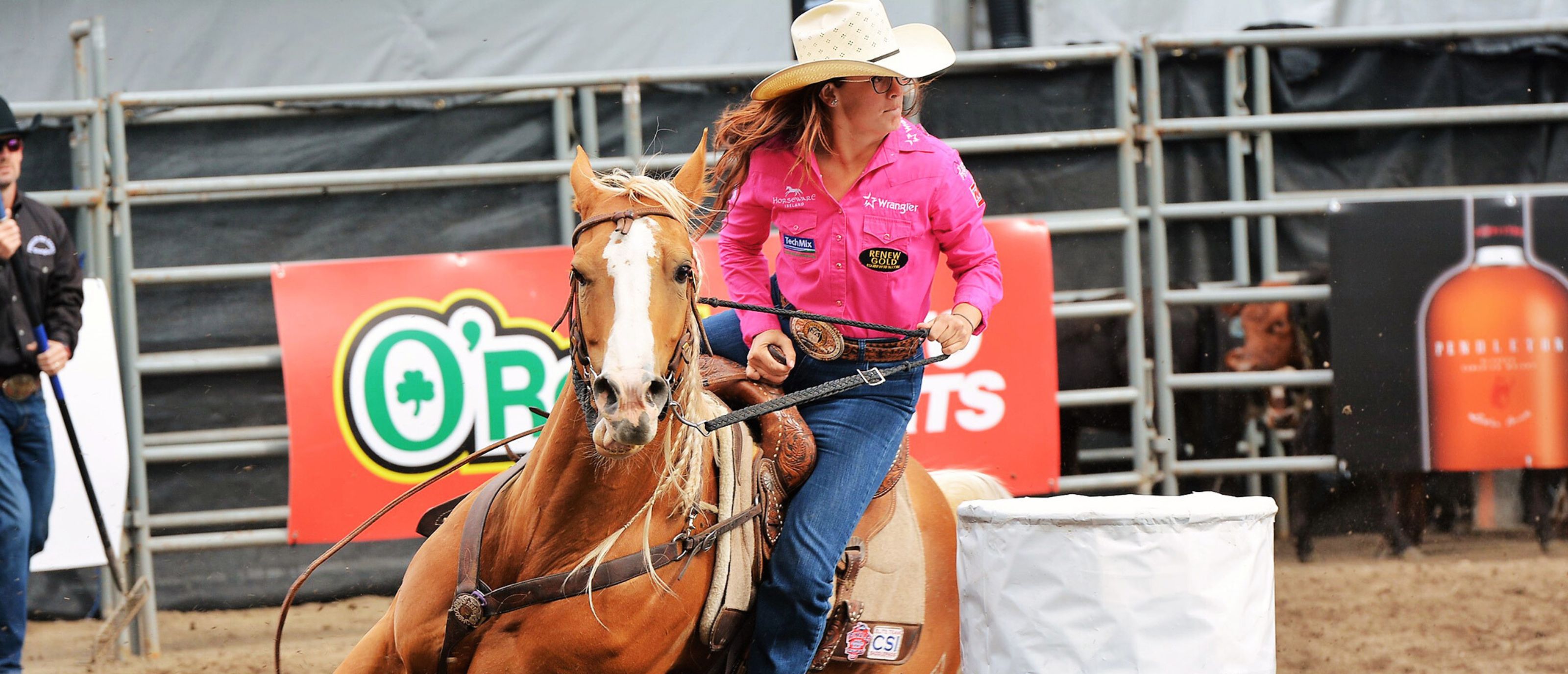
Barrel racing has no judges, which means a rider's time is the only determining factor. This is the only women's event at the Puyallup Pro Rodeo.
The rider circles three barrels in a cloverleaf pattern as quickly as she can. A rider may touch, or even tip a barrel, but if one is knocked over, a five-second penalty is added to her total time. This penalty often knocks the best competitors out of the competition, since hundredths of a second often mark the difference between first and second place.
When the rider enters the arena, an electronic eye starts the clock. The clock is stopped the instant the horse completes the pattern.
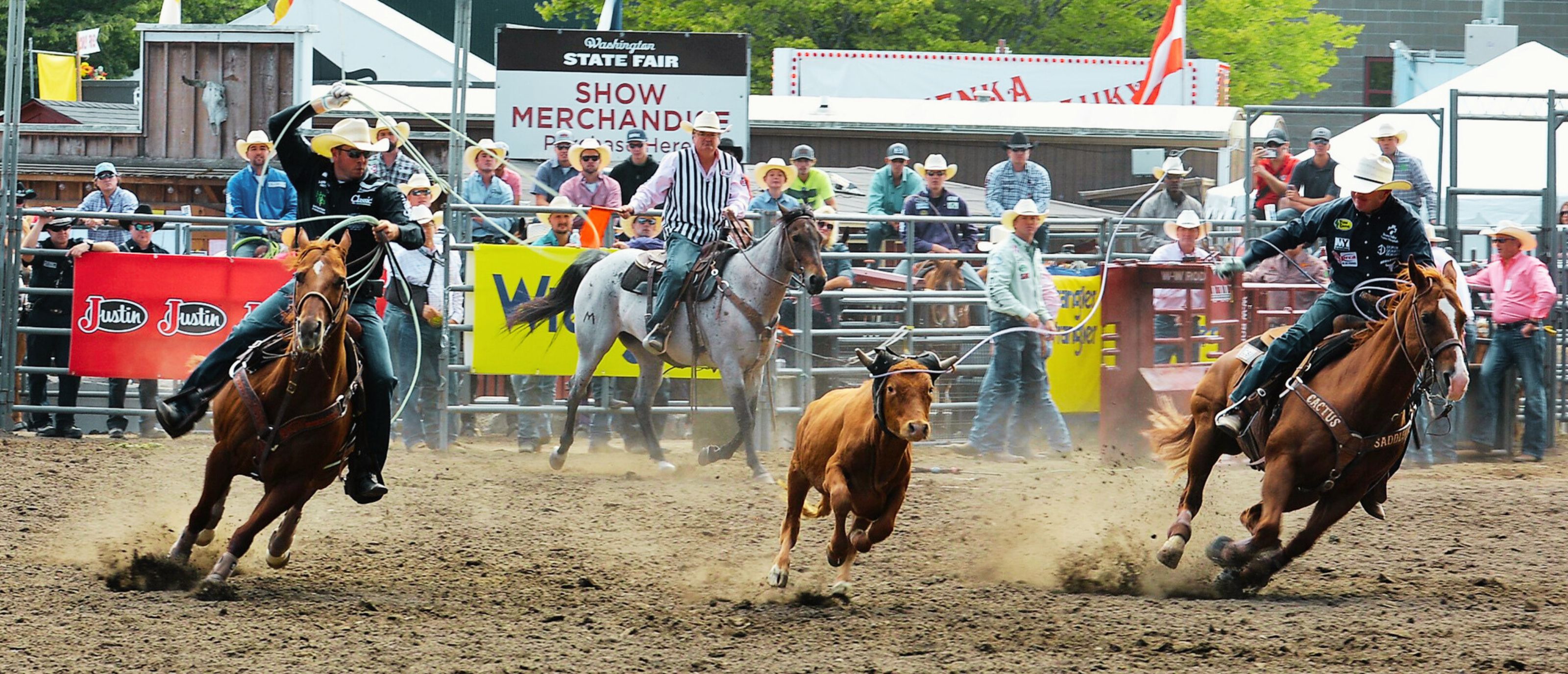
Team roping, which is the only true team event in Pro Rodeo, requires cooperation and close timing between the team members. The team consists of a header and a heeler - and don't forget their horses.
Team ropers start from a chute with a breakaway barrier. The steer gets a head start determined by the size of the arena. When the steer reaches the advantage point, the barrier is released and the ropers take off. The heeler trails slightly behind the header.
The header throws his lasso first and must make one of three catches on the steer - around both horns, around one horn and the head or around the neck. After this, the header turns the steer to the left and exposes its hind legs to the heeler. The heeler then attempts to rope both hind legs.
After both cowboys complete their tasks, the slack is gone from their ropes and both their horses face one another, then the clock stops.
Penalities:
- 10 seconds added to time for breaking the barrier
- 5 seconds added to time for roping only one footDisqualifications:
- Making an illegal catch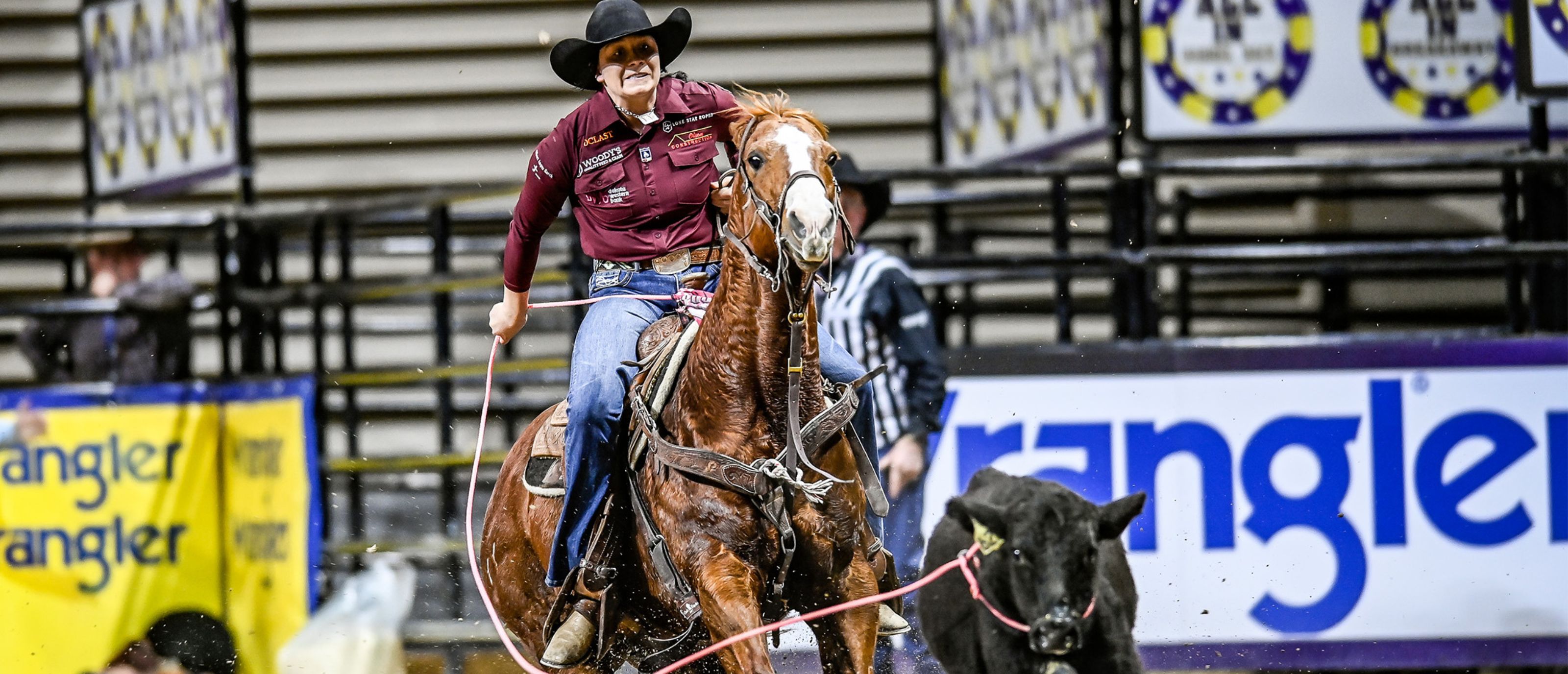
Don’t blink or you may just miss the run. In breakaway roping, the cowgirl has a flag tied close to the end of her rope and a nylon string tied from the rope to the saddle horn. Once the barrier is released and the calf leaves the roping chute, the cowgirl gives chase throwing the loop around the calf’s neck.
When the rope grows tight after the calf is roped, the string breaks away from the saddle horn and the flag goes flying, signaling the timer to stop the clock. The time in the breakaway roping can sometimes get as fast as 2.0 seconds and since it is a timed event, the fastest time wins. A broken barrier results in a 10-second penalty.





